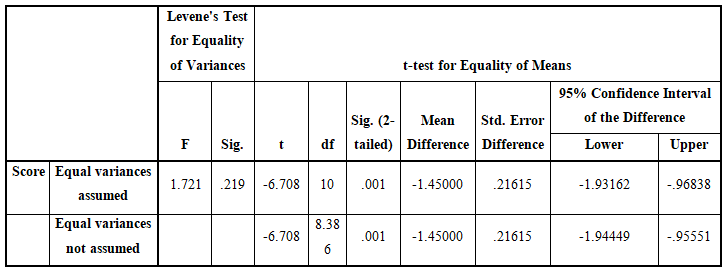EFFECTS OF CROSS FIT TRAINING AND CIRCUIT TRAINING ON CRICKETERS
Abstract
Training contributes tremendously towards the achievement of such aims of this area in sports. Sports and games are new trend in India. Explosive strength training is a part of every game for example cricket, tennis, basketball, boxing, volleyball, athletics, soccer rugby kabaddi wrestling etc. some of games are 80% to 90% dependent on explosive strength training and some are 30% to 50%.The traditional training name to improve explosive strength was plyometrics but now in current era cross fit has taken its place. Cross fit is combination of effective way to get fit. It is a fitness program that combines a wide variety of functional movements into a timed or scored workout. This research study has been conducted on male cricketers of age group from 19 to 25. The data was collected with the help of different tests-body fat percentage, dynamic strength index and vo2max under the 12 week training program of cross fit training and circuit training with different groups. The statistical analysis has been done through SPSS. The significance level was determined at p>0.05.
Downloads
References
Bayati M, Farzad B, Gharakhanlou R, Agha-Alinejad H. (2011). A Practical Model of Low Volume High-Intensity Interval Training Induces Performance and Metabolic Adaptations That Resemble ‘All-Out’ Sprint Interval Training. Journal of Sports Science & Medicine. 10, 571-576.
Bishop C, Read P, Lake J, Loturco I, Turner A. (2018). A Novel Approach for Athlete Profiling: The Unilateral Dynamic Strength Index. Journal of Strength Conditioning Research.1–7.
Comfort P, Thomas C, Dos' Santos T, et. al. (2018). Changes in Dynamic Strength Index in Response to Strength Training. Sports (Basel) 6: 1–10.
Comfort P, Thomas C, Dos' Santos T, et. al. (2018). Comparison of Methods of Calculating Dynamic Strength Index. International Journal of Sports Physiology Perform.13: 320–325.
Dudley, G. A., Fleck, S. J. (1987). Strength and Endurance Training: Are They Mutually Exclusive? Sports Medicine, 4, 79-85.
Glassman, G., & Staff. (2010). Cross Fit Training Guide. Cross Fit Training, 1-115.
Map.Crossfit.Com. (2019). Official Cross Fit Affiliate Map. [Online] Available At: Http://Map.Crossfit.Com [Accessed 21 Mar. 2019].
Mandeep Singh Nathial, Analysis of set shot in basketball in relation with time to perform the course and displacement of center of gravity, American Journal of Sports Science, Vol.2 Issue.5 pp: 122-126 (2014). Retrieved from https://www.sciencepublishinggroup.com/journal/paperinfo.aspx?journalid=155&doi=10.11648/j.ajss.20140205.13
Mandeep Singh (2010). Evaluation And Improvement Of Sports Techniques Through Biomechanical Updated Analyzing Technology, University News, Journal of Higher Education Association of Indian Universities, Association of Indian Universities, Vol:48:Issue.05;2010 Pp45-57, 2010
Mandeep Singh Nathial, A Study of Adjustment and Emotional Intelligence of University Coaches in India, American Journal of Applied Psychology. Volume 3, Issue 6, November 2014 , pp. 122-126. doi: 10.11648/j.ajap.20140306.11
Nathial, Mandeep Singh. A COMPARATIVE AND ANALYTICAL STUDY OF SELF-ESTEEM AND JOB SATISFACTION IN ATHLETES AND NON ATHLETES. Journal of Advances in Social Science and Humanities, 2(10).https://doi.org/10.15520/jassh210123
Singh, M., Kour, R., & Kour, A.,. A collaborative diversified investigation of respective responses of sports person coaches and organizations on criminalization of doping.International Journal of Health Sciences,6(S3), 11295–11310. https://doi.org/10.53730/ijhs.v6nS3.8641
Morgan, R. E. And Adamson, G. T. (1972). Circuit Training. London: G. Bell and Sons, pp.35.
R. Kalley, (1951). Physical Training Games and Athletics in School. Great Britain; Willmer Bros. & Co. Ltd, pp.123-124.
Sheppard J. M., Chapman D., Taylor K. L. (2011). An Evaluation of a Strength Qualities Assessment Method for the Lower Body. Journal of Australian Strength Conditioning. 19: 4–10.
Singh, A., & Singh , D. M. (2013). PROMOTION OF RESEARCH CULTURE –ENHANCING QUALITY IN HIGHER EDUCATION. International Journal of Behavioral Social and Movement Sciences, 2(2), 202–208. Retrieved from https://ijobsms.org/index.php/ijobsms/article/view/152
SINGH, M., & SINGH SIDHU, A. (2016). A COMPARATIVE STUDY OF BODY COMPOSITION AND RELATIVE HEALTH STATUS AMONG RESIDENT AND NON-RESIDENT STUDENTS IN DIFFERENT SCHOOLS OF J&K. International Journal of Behavioral Social and Movement Sciences, 5(3), 08–13. Retrieved from https://ijobsms.org/index.php/ijobsms/article/view/320
CHAND PURI, P., MISHRA, P., JHAJHARIA, B., & SINGH, M. (2014). COORDINATIVE ABILITIES OF VOLLEYBALL IN DIFFERENT AGE GROUPS: A COMPARATIVE STUDY. International Journal of Behavioral Social and Movement Sciences, 3(3), 56–68. Retrieved from https://ijobsms.org/index.php/ijobsms/article/view/228
Shete, A.N., Et. Al., (2014). A Study of VO2max and Body Fat Percentage in Female Athlete. Journal of Clinical and Diagnostic Research, 8(12): BC01-BC03. ISSN-0973-709X.
Singh Nathial, D. M. (2012). ANALYZING THE CREDIT BASED SYSTEM IN PHYSICAL EDUCATION. International Journal of Behavioral Social and Movement Sciences, 1(3), 172–176. Retrieved from https://ijobsms.org/index.php/ijobsms/article/view/37
SHARMA, N. P., & SINGH, M. (2014). SENIOR AGE GROUP RELATIVE EXERCISES AND IMPACT ON THEIR LIFESTYLE. International Journal of Behavioral Social and Movement Sciences, 3(04), 78–82. Retrieved from https://ijobsms.org/index.php/ijobsms/article/view/246

Copyright (c) 2023 Hardeep Kaur Saini, Sukhjivan Singh

This work is licensed under a Creative Commons Attribution 4.0 International License.














